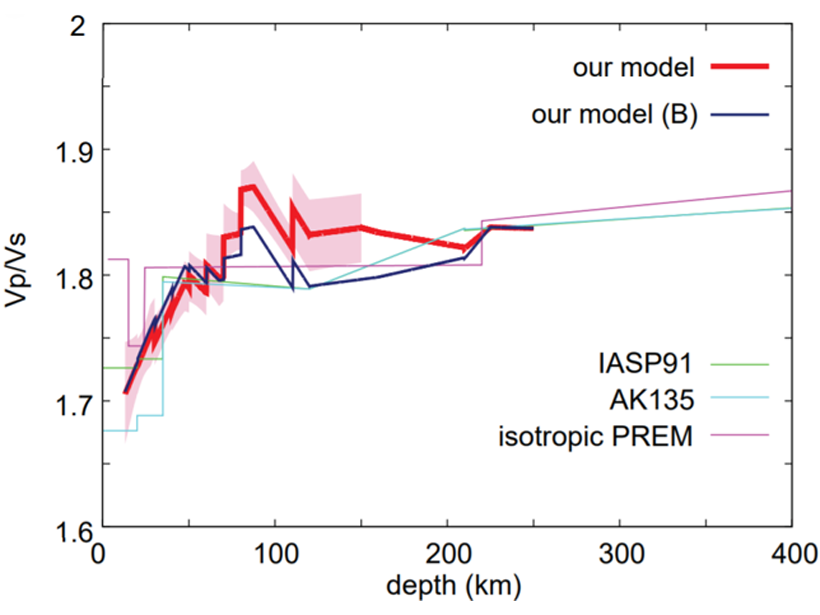Source: Journal of Geophysical Research: Solid Earth
The oceanic lithosphere is a relatively simple version of the tectonic plate and therefore fundamental to our understanding of plate tectonics. Temperature controls the properties of oceanic lithosphere to first order, as it cools and thickens with age. However, several observations now suggest more complex dynamics, including small scale convective processes and melt. However, a full understanding is limited given that high resolution seismic imaging of ocean lithosphere is rare, and most constraints are only on S-wave velocities.
Takeuchi et al. [2020] use subduction zone earthquakes recorded by the nearby NOMan (Normal Mantle Project) broad band ocean bottom seismic deployment, which allows them to constrain the P-wave velocity of the ocean lithosphere and asthenosphere at a higher resolution than is typically possible.
The study uses waveform modelling and accounts for anisotropic effects that are well-known to exist in ocean lithosphere, finding high P-wave velocities in the lithosphere, low P-wave velocities in the asthenosphere, with a peak in Vp/Vs ratios near the lithosphere-asthenosphere boundary. The observation cannot be easily explained by simple thermal models. Instead it is interpreted as an anelastic effect, melt, or chemical stratification.
Overall, more tight constraints on P-wave and S-wave velocities of the ocean lithosphere will help determine how ubiquitous this result is and lead to a better understanding of the tectonic plate with implications for the evolution of the planet.
Citation: Takeuchi, N., Kawakatsu, H., Shiobara, H., Isse, T., Sugioka, H., & Ito, A., et al. [2020]. Inversion of longer‐period OBS waveforms for P structures in the oceanic lithosphere and asthenosphere. Journal of Geophysical Research: Solid Earth, 125, e2019JB018810. https://doi.org/10.1029/2019JB018810
—Kate Rychert, Associate Editor, JGR: Solid Earth
Text © 2020. The authors. CC BY-NC-ND 3.0
Except where otherwise noted, images are subject to copyright. Any reuse without express permission from the copyright owner is prohibited.

